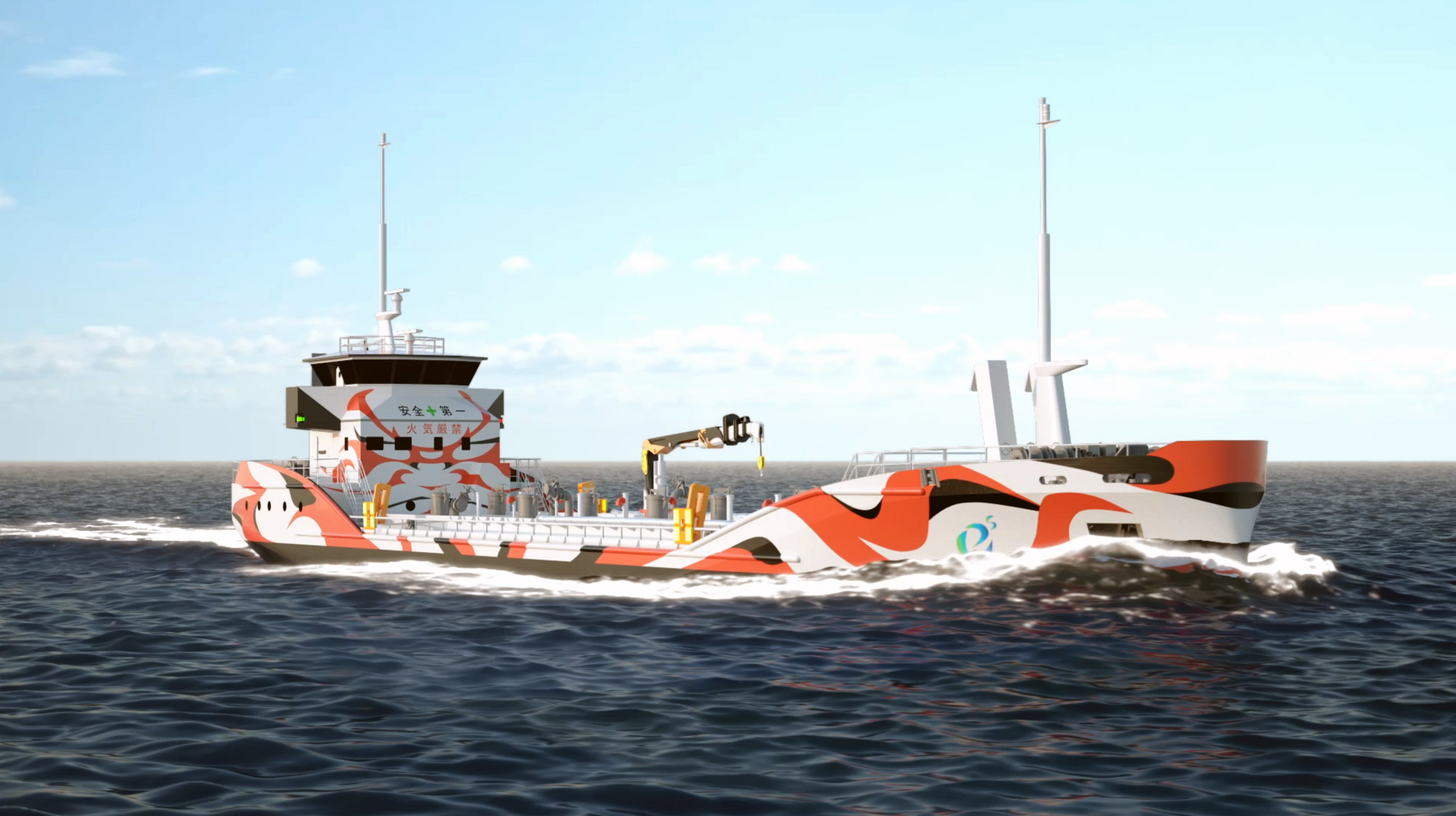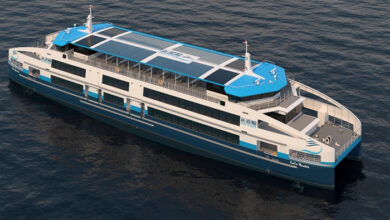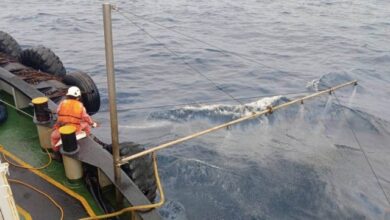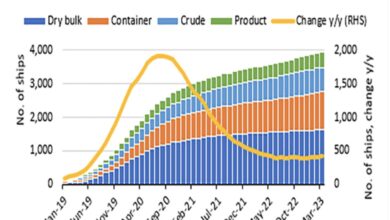اليابان تنزل إلى المياه أول ناقلة وقود بحرية تعمل بالكهرباء

ذكرت بعض مواقع الإنترنت أن شركة (كى او ايه اندسترى كومبانى ) اليابانية أنزلت إلى المياه أول سفينة لنقل الوقود تعمل بالطاقة الكهربائية.
وأشار بيان صادر عن الشركة إلى أن السفينة أنزلت إلى المياه خلال احتفالية خاصة اجريت في محافظة كاجاوا بجزيرة شيكوكو.
ويبلغ طول سفينة (اساهى ) الجديدة 62 مترا، وارتفاعها الإجمالي 10.3م، وتبلغ الحمولة المسجلة لهذه الناقلة 499 طنا، وجحم مستوعبات نقل الوقود فيها 1.28 ألف متر مربع.
Японская e5 Lab Inc (Asahi Tanker Co, Exeno Yamamizu Corp, Mitsui OSK Lines Ltd и Mitsubishi Corp) начала строительство первого в мире полностью электрического танкера прибрежного класса, который будет работать на батареях большой емкости. pic.twitter.com/JTJhCBfXhk
— Гурьянов Сергей (@Segozavr) August 6, 2019
وزودت هذه السفينة ببطاريات ليثيوم أيون باستطاعة 3480 كيلووات، ويمكن شحن هذه البطاريات بالكامل خلال 10 ساعات اعتمادا على الطاقة الكهربائية المولدة من ألواح الطاقة الشمسية أو عنفات الرياح.
كما حصلت هذه السفينة على تقنيات تمكنها من إمداد السفن الأخرى بالطاقة الكهربائية في حالات الطوارئ.
ومن المفترض أن يبدأ استخدام هذه السفينة اعتبارا من مارس العام القادم، لتستعمل لتزويد السفن العابرة في خليج طوكيو بالوقود.
Japanese shipping firm Asahi Tanker Co. has placed an order for the construction of two electrically-powered tankers.
Japanese shipbuilders Koa Sangyou Co and Imura Zosen KK will be in charge of constructing one vessel each, while Kawasaki Heavy Industries will serve as the system integrator for the duo.
The two ships, described as the world’s first zero-emission electric-powered tankers, are slated for delivery in March 2022 and March 2023 respectively.
The two tankers will adopt the “e5 tanker” design developed by e5 Lab Inc, a company set up by Mitsui O.S.K. Lines, Asahi Tanker, Exeno Yamamizu Corporation, and Mitsubishi Corporation to build up infrastructure services in the marine shipping industry that focus on electrically powered vessels.
The tankers will be powered completely by large-capacity lithium-ion batteries and are slated to go into service as bunker vessels in Tokyo Bay.
Specifications
- Dimensions: LOA 62m / Breadth 10.30m / Draft 4.15m
- Ship classification society: Nippon Kaiji Kyokai (ClassNK)
- Cargo: Fuel oil
- Gross tonnage: 499 tons
- Speed: About 10 knots
- Cargo tank capacity: 1,280m3
- Propulsion equipment: Azimuth thrusters 300kw x 2 Side thrusters 68kw x 2
- Battery capacity: 3,480kWh
The vessels will integrate various automated equipment and digital tools including the Internet of Things (IoT) to reduce the crews’ onboard workload and increase the ship’s operating efficiency.
المصدر: فيستي














